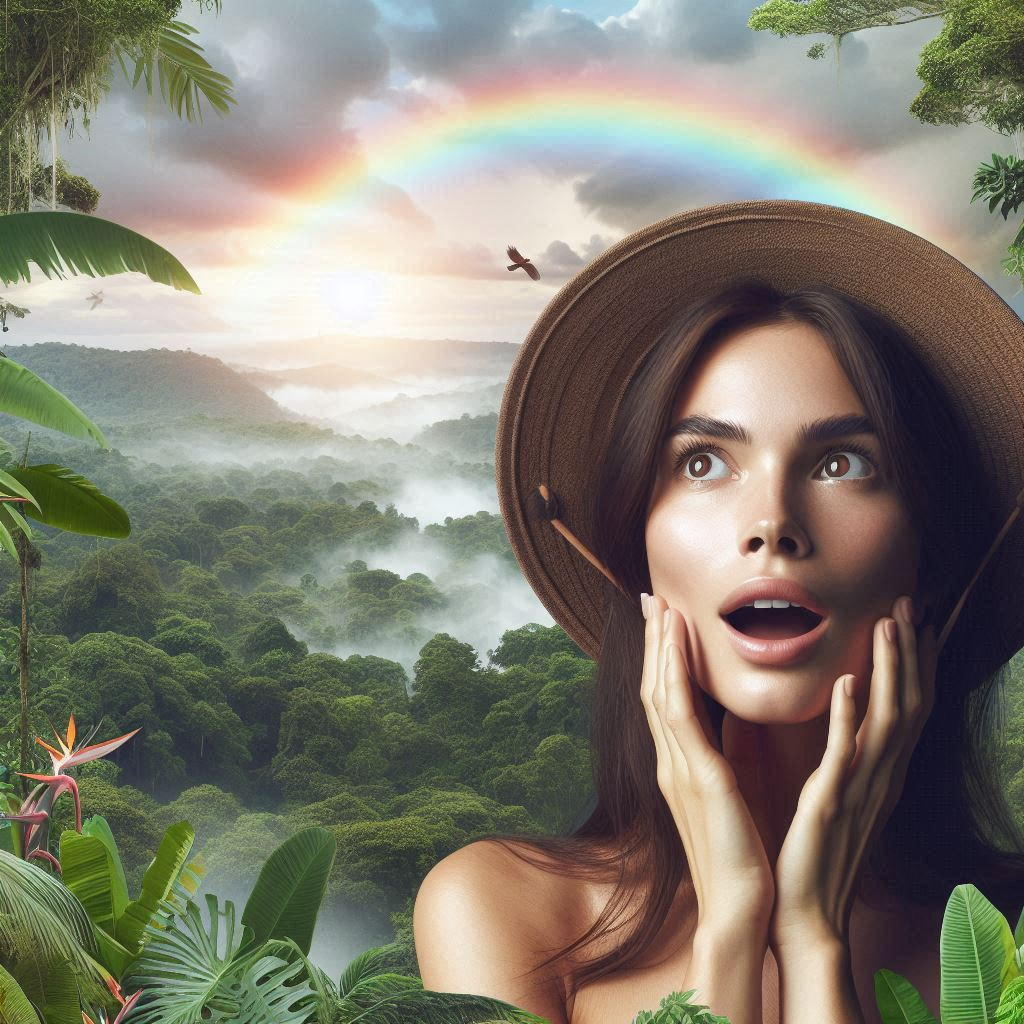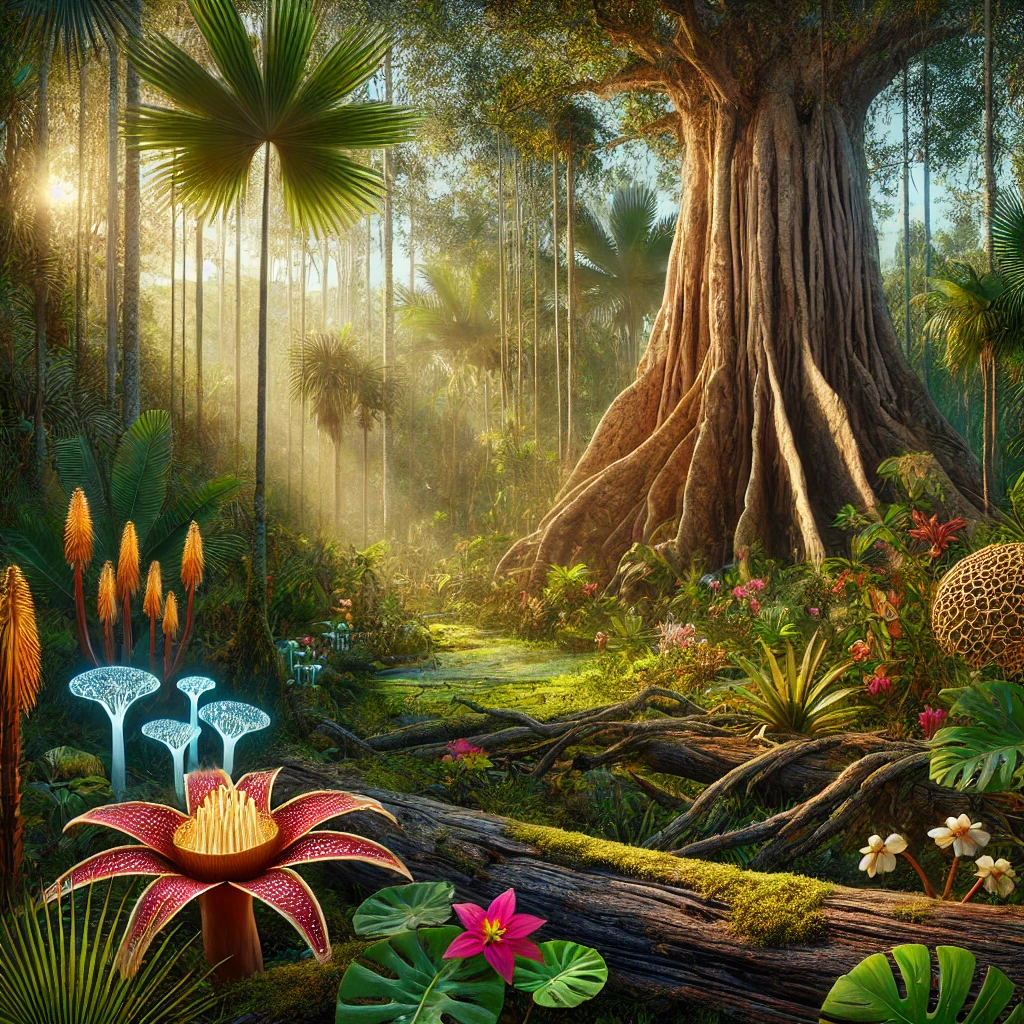The green, colorful ecology of the Amazon rainforest, generally referred to as the “lungs of the Earth,” vibrates with life.
With the Amazon’s remarkable biodiversity, scientists and nature lovers have been fascinated with its secretive and surprising plant life.
The Amazon’s flora is both exceptionally colorful and remarkable, ranging from colossal trees that remember water to night-glow plants.
Let’s explore some interesting and entertaining trivia regarding the rare flora that live in this massive jungle.

What Are Some Fun Facts About the Amazon Rainforest Plants?
1. Pharmaceutical Potential
- Less than 1% of Amazonian plants have been explored for their potential medical benefits, despite the fact that over 25% of Western medications come from these plants.
2. Walking Palm Trees
- It is believed that the Socratea exorrhiza, commonly referred to as the “Walking Palm,” moves toward sunlight by allowing its older roots to die off and producing new ones in a favored direction.
3. World’s Largest Flower
- Rafflesia arnoldii, which can grow as much as 3 feet in diameter, is the world’s largest flower and is native to the Amazon.
- To attract pollinators, it releases a potent smell that is like rotting flesh.
4. Natural Insect Repellent
- A symbiotic relationship exists between the lemon ant and the Duroia hirsuta tree, sometimes referred to as the “Devil’s Garden.”
- By putting a herbicide into the nearby flora and raking the area like a garden, these ants guard the tree.
5. Bioluminescent Plants
- Due to a chemical reaction, certain fungus in the Amazon light in the dark.
- This phenomenon is known as bioluminescence.
- This phenomena, known as “foxfire,” is frequently observed on leaves and decomposing wood.
6. Water-Storing Trees
- One of the biggest trees in the Amazon, the kapok tree (Ceiba pentandra), may reach heights of more than 200 feet while keeping a significant volume of water in its trunk to help it survive the dry season.
Read: Funny Facts About Seals That Will Make You Laugh Out Loud
7. Air-Purifying Bromeliads
- Common in the Amazon rainforest, bromeliads store water in the bases of their leaves, forming shelters for tiny animals.
- By absorbing impurities, they also help in air purification.
8. The Chocolate Tree
- The primary component of chocolate is made from the seeds of the Amazonian cacao tree, Theobroma cacao.
- “Theobroma” translates to “food of the gods” from Greek.
9. Carnivorous Plants
- Many types of carnivorous plants, including pitcher plants and sundews, can be found in the Amazon.
- To try to make up for the deficient nutrients in the soil, these plants catch and eat insects.
10. Infinite Varieties
- The Amazon is the most species-rich region on Earth, home to an estimated 80,000 plant species, many of which are unique.

11. Rubber Trees
- Originating in the Amazon rainforest, the rubber tree (Hevea brasiliensis) is the main supplier of natural rubber.
- The 19th-century rubber business flourished as a result of the procedure of removing latex from these trees.
12. Amazon Water Lily
- Victoria amazonica, frequently referred to as the Amazon Water Lily, is one of the biggest aquatic plants on the planet.
- Its leaves are strong enough to hold a young child’s weight and can reach a diameter of up to ten feet.
13. Amazon Rainforest Figs
- Growing as epiphytes on other trees, straggling figs begin their existence as such.
- They eventually destroy their host tree and take its place by covering it with their roots and branches over time.
14. Cinchona Trees
- Quinine, which has long been used to treat malaria, comes from the bark of the Cinchona tree.
- This finding had a big impact on medicine, particularly in tropical areas.
15. Poison Dart Frogs and Plants
- Poison dart frogs consume deadly substances produced by several plants in the Amazon.
- These toxins serve as the frogs’ defensive mechanism, rendering them lethal to would-be predators.
Bottom Line
Beyond serving as a backdrop to one of the broadest ecosystems on Earth, the plants of the Amazon Rainforest are essential to the planet's health and have a plethora of amazing traits that never cease to astound and excite.
These plants provide a reminder of the stunning beauty and complexity of nature, both through their unique adaptations and their use in modern medicine.
The Amazon's flora is a never-ending source of amazement and discovery in addition to being necessary to the ecosystem.
